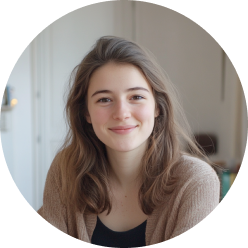Good News: Apple Provides COVID-19 Exposure Notifications in the iOS 13.5/13.7/14
In light of the COVID-19 epidemic, Apple and Google have collaborated to offer a secure and private coronavirus contact tracing implementation for both Android and iOS.
But it seems like Apple will be the first to implement contact tracing via Bluetooth with their devices after the release of iOS 13.5 on iPhone. Although the update hasn't been public yet, Apple released the beta version for the developers.
The contact tracing is also known as Exposure Notifications. It will be turned off by default. You have to download the application from the local health authority; it will require your permission.
- Part 1. Overview: Apple Notify Users When They May Have Been Exposed to COVID-19
- Part 2. How to Turn on "COVID-19 Exposure Notifications" Feature on iPhone/iPad?
- Part 3. What to Do If You Have Been Exposed to COVID-19?
- Part 4. The Common Questions People Asked about COVID-19
Part 1. Overview: Apple Notify Users When They May Have Been Exposed to COVID-19
iPhone is using Bluetooth to securely share your random IDs with nearby devices and collect their IDs. This enables an app to notify you if you may have been exposed to COVID-19. Random IDs are deleted after 14 days.
Apps you authorize can notify you if you've been exposed to COVID-19. You can also choose to anonymously share your COVID-19 diagnosis."
Apple's COVID 19 contact tracking or exposure notification is the newly added feature on the iOS 13.5.
The Company collaborated with its counterpart, Google, who is about to release the same on the Android platform. But it seems like Apple will be the first to hand it to the public. The feature will be turned off by default, but after you download the app from the local health authority with your permission, you will start getting the notifications.
Part 2. How to Turn on "COVID-19 Exposure Notifications" Feature on iPhone/iPad?
Since Apple rolled out their COVID-19 Tracing Tool on iOS 13.5, it says we need an app in order to use it. And since there isn't an official app to use Apple's new tool. Why even develop it if there isn't an app for us to download. Is there even an app that'll work with Apple's new COVID-19 tracing tool on iOS 13.5/14.
To enable the contact-tracing feature on your iPhone, you'll need to first update your device to the latest iOS 14 as you normally would update it, through the "General" section of your Settings app. Once your iPhone installs the new software and restarts, you'll find the new COVID-19 notification feature in following steps:
- After updating to iOS 14, navigate to "Settings".
- Locate the "Privacy" option and tap on it.
Select "Health" and tap on "COVID-19 Exposure Logging". If you have a compatible public health app installed, you'll be able to tap or switch the toggle from gray to green.

Pic. Turn on COVID 19 exposure notification on iPhone
However, unless you are able to install a compatible public health app, the feature will remain off and you will not be able to receive notifications.Now the official government health agencies are starting to incorporat the application programming interface (API) into their apps. A handful of U.S. states along with 22 countries have expressed interest in using the framework.
At the time of this writing, there are only three states that have publicly stated they will use the API: Alabama, South Carolina, and North Dakota.
Tip: If you have problems or get errors when updating to iOS 13.5/14, you can read the common iOS 13 Update Problems and Fixes to get your problem solved profectly.
Part 3. What to Do If You Have Been Exposed to COVID-19?
Due to the COVID-19 epidemic, people all over the globe have been asked to stay at their homes with the hope that this may stop the chain of infection. But the question remains, what will you do if you get infected?
1. Monitor your health
First, you need to monitor your health for fever, cough, and shortness of breath during the 14 days after the last day you were in close contact with the sick person with COVID-19.
Take care of yourself and stay in touch with a doctor. If the situation goes downward, call them for medical care.
2. Stay At Your Home and Separate Yourself from Other People
Do not go to work or school, and you should avoid public places for those 14 days.
If you have your family living with you, then you need to stay separate from them as you may also get them infected.
3. Contact for a public health interview
If you are not sure about your condition, then contact Public Health for an interview. Well, then what are the problems and the symptoms you are dealing with.
4. Ask for a COVID-19 test
If you think you might have COVID-19, contact your healthcare provider to ask if you can be tested.
Part 4. The Common Questions People Asked about COVID-19
Here are answers to a few common questions asked by people regarding COVID-19.
Question 1. What is the recovery time for the coronavirus disease?
According to preliminary data, it takes about 2 weeks to recover for the patients with mild cases.
But the patients with a critical condition takes longer; about 3 to 6 weeks.
Question 2. What is the symptom of the coronavirus disease?
The most common symptoms for COVID-19 are fever, dry cough, and tiredness.
There are other symptoms as well, but these symptoms haven't been associated with all the COVID-19 patients. Like aches, pains, nasal congestion, headache, sore throat, diarrhea, rash or skin discoloration, etc.
Question 3. How long is it between when a person is exposed to the virus and when they start showing symptoms?
It takes between 1 to 14 days for a person to develop symptoms after getting exposed to COVID-19.
Question 4. Are masks effective against the coronavirus disease?
Yes, face masks combined with other preventive measures, such as frequent hand-washing and social distancing, help slow the spread of the disease.
The World Health Organization (WHO) currently says two groups of people should wear protective masks, those who are sick and showing symptoms and caring for people suspected to have coronavirus.
Summary
So we have shown you how to turn on "COVID-19 Exposure Notifications" feature on iOS 13.5/14 and what to do if you have been exposed to COVID-19. Clean your hands often and maintain a safe distance from anyone who is coughing or sneezing, wear masks if necessnary to protect youself from COVID-19.
- Downgrade iOS 18 to iOS 17 ;
- Fix iPhone won't restore in recovery mode, my iPhone is stuck on the Apple Logo,iPhone black screen of death, iOS downgrade stuck, iPhone update stuck, etc.
- Support all iPhone models and the latest iOS 18 and earlier.
Speak Your Mind
Leave a Comment
Create your review for Tenorshare articles







